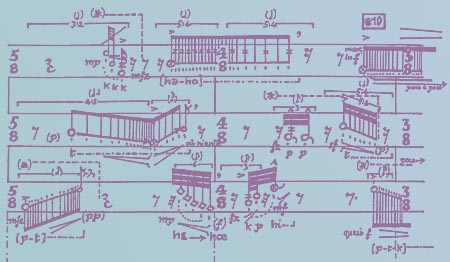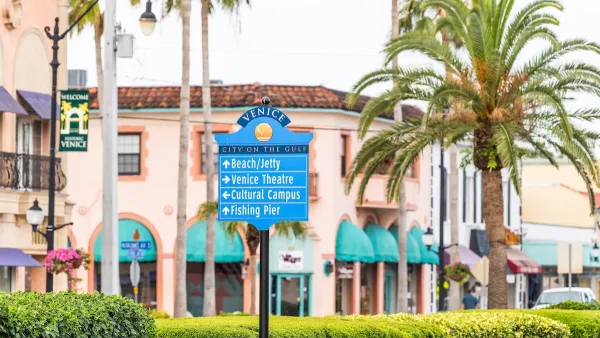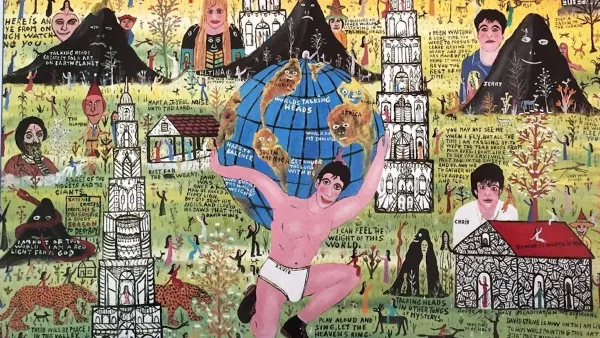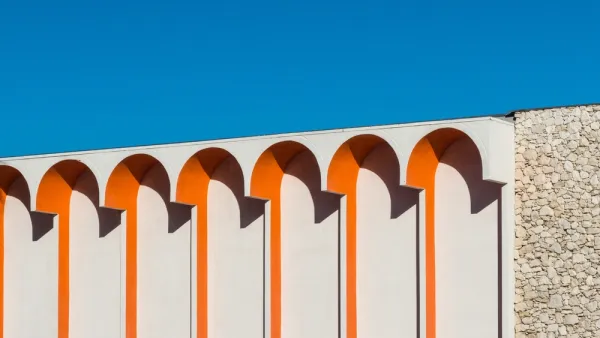On my way to work this morning, I was listening to an interview with the band Blitzen Trapper on my iPod. They’ve got a beautiful song called ‘Furr’; the sound echoes 1970s folk rock- and roots influences like English folk, country and bluegrass. Anyway, Eric Early, the main songwriter, got my attention with his answer to this question: INTERVIEWER: Obviously ‘American music’ means different things to different people. What does it mean to you?
On my way to work this morning, I was listening to an interview with the band Blitzen Trapper on my iPod. They've got a beautiful song called ‘Furr'; the sound echoes 1970s folk rock- and roots influences like English folk, country and bluegrass. Anyway, Eric Early, the main songwriter, got my attention with his answer to this question:
INTERVIEWER: Obviously ‘American music' means different things to different people. What does it mean to you?
EARLY: I don't know, now I think it sort just means the music that comes out of the environment that we've created. And also I think it comes out of the schism between the environment that we've created, and the environment that was there initially.
One of the things that makes popular music so interesting is the way that it constantly builds on the past to reinvent itself. Ray Charles famously took gospel music and wedded it to rhythm and blues. The pumping cumbia music of Mexican norteña bands would never have happened if not for Czech and German settlers on the Texas border. And today, a group of producers in Tijuana have combined that same norteña with electronica to create the "Nortec" sound.
Architecture, on the other hand, isn't so good at hybrids, like rock or folk or hip hop. It's more like classical music. The advent of modernism in classical music early in the 20th century created a schism. Dissonance and arrhythmia have dominated the landscape of modern classical music ever since. Composers who dare to make music that makes reference to the past are usually derided. And so goes architecture.
Our cities and towns are suffering from a schism between the native styles of architecture that made our country unique and a modern style that broke that connection with the "old, weird America", as Greil Marcus put it. The clean lines of modernism have a tendency to erase our past rather than build upon it, taking our sense of history and place with it.

Modern classical music, with a resemblance to modern architecture.
While I'm not one to reject the modernist style out of hand in architecture (it is responsible for some truly beautiful buildings), it does seem clear that it is not a ‘popular' form. The audience for modern classical music is small and elite; the same can be said for those who appreciate the rigor of modern architecture, despite the fact that it professes to be a universal, democratic aesthetic.
Meanwhile, many of the attempts to create new versions of American vernacular styles have fallen flat. Particularly in California where the history doesn't run as deep, new buildings engaging with traditional styles are vicitims of too much cost-cutting and cheap imitation in place of true innovation.
So why not? Can we mend the schism between the environment we've created and the environment that was there initially? Where are the architects with the skill to build upon the styles of the past, and reinvent them with panache? I say, bring back the old, weird America, but make it new again.

Analysis: Cybertruck Fatality Rate Far Exceeds That of Ford Pinto
The Tesla Cybertruck was recalled seven times last year.

National Parks Layoffs Will Cause Communities to Lose Billions
Thousands of essential park workers were laid off this week, just before the busy spring break season.

Retro-silient?: America’s First “Eco-burb,” The Woodlands Turns 50
A master-planned community north of Houston offers lessons on green infrastructure and resilient design, but falls short of its founder’s lofty affordability and walkability goals.

Test News Post 1
This is a summary

Analysis: Cybertruck Fatality Rate Far Exceeds That of Ford Pinto
The Tesla Cybertruck was recalled seven times last year.

Test News Headline 46
Test for the image on the front page.
Urban Design for Planners 1: Software Tools
This six-course series explores essential urban design concepts using open source software and equips planners with the tools they need to participate fully in the urban design process.
Planning for Universal Design
Learn the tools for implementing Universal Design in planning regulations.
EMC Planning Group, Inc.
Planetizen
Planetizen
Mpact (formerly Rail~Volution)
Great Falls Development Authority, Inc.
HUDs Office of Policy Development and Research
NYU Wagner Graduate School of Public Service





























